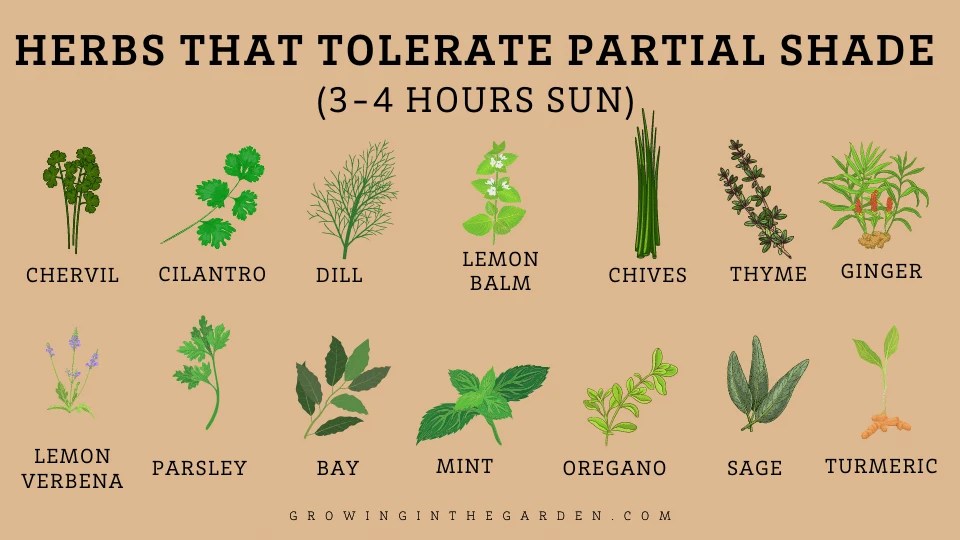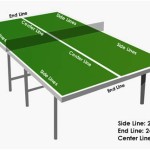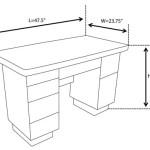Vegetables That Grow Well In Shade
Many gardens, particularly in urban settings, face the challenge of limited sunlight. Buildings, trees, and other structures can cast significant shade over portions of a garden, reducing the feasibility of growing sun-loving vegetables. However, a surprising number of vegetables can thrive in partial shade, defined as receiving between three and six hours of direct sunlight daily. Understanding which vegetables tolerate and even prefer shadier conditions allows gardeners to maximize their yields, even in less than ideal environments.
The success of growing vegetables in shade depends on several factors beyond merely selecting the right plant. Soil health, moisture levels, and microclimate considerations all play a crucial role. Adequate soil drainage prevents root rot, which is exacerbated in shadier, cooler conditions. Regular monitoring for pests and diseases is also essential, as shaded environments can sometimes create favorable conditions for certain problems.
Understanding Shade Tolerance in Vegetables
Vegetable plants, like all plants, require sunlight to perform photosynthesis, the process by which they convert light energy into chemical energy for growth. However, different vegetables have varying light requirements. Some vegetables, such as tomatoes and peppers, are considered full-sun plants, needing at least six hours of direct sunlight each day to produce abundant fruit. Other vegetables are more shade-tolerant, meaning they can grow and produce viable yields with less direct sunlight. This tolerance is often linked to the specific part of the plant that is harvested. Leafy greens, for example, typically require less sunlight than fruiting vegetables because their energy is primarily directed towards leaf production rather than fruit development.
When choosing vegetables for a shady garden, it is crucial to consider the intensity and duration of shade. Dappled shade, filtered sunlight that penetrates through tree canopies, is generally more favorable than deep shade, which receives little to no direct sunlight. Morning sun is often preferable to afternoon sun, as it allows the plants to dry off quickly and reduces the risk of fungal diseases. Careful observation of sunlight patterns throughout the day and season is vital for selecting an appropriate location for each vegetable.
Furthermore, understanding the specific microclimate of a shady area can significantly impact plant growth. A sheltered location protected from strong winds may be warmer and drier than an exposed area, impacting water needs and potentially mitigating some of the disadvantages of shade. Conversely, a low-lying area prone to waterlogging may require improved drainage before planting shade-tolerant vegetables.
Leafy Greens: Shade-Loving Staples
Leafy greens are generally among the most shade-tolerant vegetables, making them a staple crop for shady gardens. These vegetables prioritize leaf production over fruit development, which requires less sunlight. Many leafy greens can thrive with as little as three to four hours of direct sunlight per day.
Lettuce (Lactuca sativa): Lettuce is a popular choice for shady gardens. It can bolt, or go to seed, quickly in hot, sunny conditions, so shade can actually prolong its growing season. Loose-leaf varieties, such as romaine and butterhead, are generally more shade-tolerant than head lettuce varieties.
Spinach (Spinacia oleracea): Similar to lettuce, spinach benefits from shade, which helps prevent bolting and keeps the leaves tender and flavorful. Spinach prefers cool temperatures and consistent moisture, making shady locations ideal.
Kale (Brassica oleracea var. sabellica): Kale is a robust leafy green that can tolerate a wide range of conditions, including partial shade. Its leaves can be harvested continuously throughout the growing season, providing a steady supply of nutrients.
Arugula (Eruca vesicaria sativa): Arugula, also known as rocket, has a peppery flavor that adds a unique zest to salads. It grows quickly and easily in partial shade, and its leaves are often more tender and less bitter when grown in shadier conditions.
Swiss Chard (Beta vulgaris subsp. cicla): Swiss chard is a colorful and nutritious leafy green that tolerates partial shade well. Its vibrant stalks and leaves add visual appeal to the garden.
When growing leafy greens in shade, it's important to ensure adequate spacing to allow for air circulation and prevent fungal diseases. Regular watering is also crucial, especially during dry periods. Mulching around the plants can help retain moisture and suppress weeds.
Root Vegetables: Hidden Treasures in the Shade
While root vegetables might seem like they need full sun to develop their roots, some varieties can thrive in partial shade. The key is to provide loose, well-draining soil that allows the roots to expand easily. While they might not grow as large as those grown in full sun, they can still produce a worthwhile harvest.
Radishes (Raphanus sativus): Radishes are quick-maturing root vegetables that can tolerate partial shade. They prefer cool temperatures and consistent moisture, making them a good choice for shady spring and fall gardens. They also act as good indicator plants for soil quality, since they will quickly show deficiencies in drainage or nutrient levels.
Beets (Beta vulgaris): Beets can tolerate partial shade, although they may not produce as large of roots as those grown in full sun. However, their leaves are also edible and can be harvested for greens, making them a versatile crop for shady gardens. The vibrant colors of beet varieties also add visual appeal to the garden.
Carrots (Daucus carota subsp. sativus): Carrots generally prefer full sun, but they can still produce a reasonable harvest in partial shade. Shorter, rounder varieties tend to perform better in shade than longer, thinner varieties. Consistent moisture is crucial for carrot development, especially in shadier conditions.
Turnips (Brassica rapa subsp. rapa): Turnips are another root vegetable that can tolerate partial shade. Both the roots and the leaves are edible, providing a dual harvest. Turnips are relatively easy to grow and mature quickly, making them a good choice for beginners.
When growing root vegetables in shade, it's important to ensure the soil is loose and well-draining to prevent the roots from becoming stunted or misshapen. Amending the soil with compost or other organic matter can improve its structure and fertility. Regular thinning is also crucial to allow the roots ample space to develop.
Brassicas: Cool-Season Shade Dwellers
The brassica family, also known as cruciferous vegetables, includes many cool-season crops that can tolerate partial shade. These vegetables prefer cool temperatures and consistent moisture, making them well-suited to shady gardens. They are also relatively pest-resistant, which is a bonus in shadier environments where air circulation may be limited.
Broccoli (Brassica oleracea var. italica): Broccoli can tolerate partial shade, although it may not produce as large of heads as those grown in full sun. Shade can actually help prevent broccoli from bolting in hot weather. Ensure adequate spacing between plants to allow for air circulation and prevent fungal diseases.
Cauliflower (Brassica oleracea var. botrytis): Similar to broccoli, cauliflower benefits from shade, which helps prevent bolting and keeps the heads white and tender. Select early-maturing varieties for shady gardens to ensure a harvest before the weather gets too warm.
Cabbage (Brassica oleracea var. capitata): Cabbage can tolerate partial shade, although it may not produce as large of heads as those grown in full sun. Shade can help prevent cracking, a common problem in cabbage during hot, dry weather.
Kohlrabi (Brassica oleracea var. gongylodes): Kohlrabi is a unique vegetable with a bulbous stem that tastes similar to a mild turnip. It can tolerate partial shade and prefers cool temperatures. Harvest kohlrabi when the bulbs are about the size of a tennis ball for the best flavor and texture.
When growing brassicas in shade, it's important to monitor for pests such as cabbage worms and aphids. Regular inspection and prompt treatment can prevent these pests from causing significant damage. Providing well-draining soil and adequate spacing between plants are also crucial for preventing fungal diseases.
Beyond these commonly grown vegetables, other options exist for shade gardeners. Certain herbs, such as mint, parsley, and chives, thrive in partial shade. Even some fruiting vegetables, like strawberries, can produce a decent crop in shady locations, although the fruit may be smaller and less abundant. Experimentation and careful observation are key to discovering which vegetables perform best in a particular shady garden. Understanding the specific needs of each plant and adapting gardening practices accordingly can unlock the potential of even the most challenging shady spaces.

Shade Tolerant Vegetables Portland Monthly

Shade Tolerant Vegetables To Grow Mr Fothergill S Latest Help Advice

30 Vegetables That Grow In Shade

30 Vegetables That Grow In Shade

Vegetables Herbs Flowers That Grow In Shade 5 Tips For Gardening Growing The Garden

20 Shade Tolerant Plants To Grow In Your Garden This Summer Live Love Fruit

30 Vegetables That Grow In Shade

Shade Tolerant Vegetables Vs Sun Friendly Veggies Vegetable Garden Planner Veggie Veg

Vegetables To Grow In Shade Growing Tips And Garden Plans The Old Farmer S Almanac

Vegetables Herbs Flowers That Grow In Shade 5 Tips For Gardening Growing The Garden








